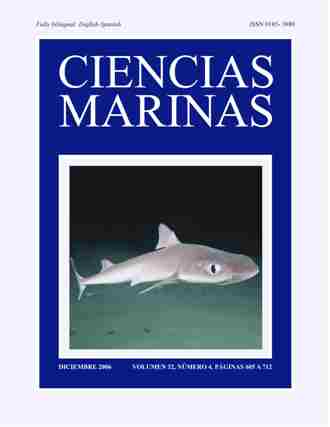Characterization and distribution patterns of surficial sediments of Cullera Bay, Spain
Main Article Content
Abstract
Se investigó la variación en la distribución espacial y temporal de las características del tamaño de grano de los sedimentos superficiales y se identificaron áreas susceptibles a contaminación asociadas al tamaño de grano fino en Bahía Cullera, España. Se analizaron 90 muestras de sedimento superficial que fueron recolectadas durante seis campañas de muestreo a mediados y finales de verano y mediados de otoño de 2002, y a mediados de invierno, primavera y verano de 2003. Se analizó el tamaño de grano aplicando diferentes métodos como el análisis bivariante y funciones discriminantes empleadas en la interpretación de mecanismos y ambientes de depositación. Para identificar las zonas con mayor susceptibilidad de ser contaminadas por substancias tóxicas asociadas a tamaños de grano fino, se obtuvieron mapas de contornos de la distribución del tamaño medio de grano para las seis campañas de muestreo. Los sedimentos superficiales de Bahía Cullera se diferenciaron de acuerdo al escenario de depositación en depósitos de sedimentos marinos someros y depósitos de sedimentos fluviales asociados a la descarga del Río Júcar. La variación espaciotemporal mostró que la concentración de sedimentos gruesos se presentó en la región más cercana a la desembocadura del río, mientras que los sedimentos más finos se concentraron en la zona central y norte de la bahía durante la época de escasez de lluvia, por lo que durante esta época los sedimentos superficiales de estas zonas podrían ser susceptibles de contaminación por substancias nocivas asociadas a tamaños de grano fino.
Spatial and temporal variations in the distribution of the grain-size characteristics of surficial sediments were studied and the areas susceptible to contamination associated with fine-grained sediments were identified in Cullera Bay, Spain. We analyzed 90 sediment samples collected during six sampling campaigns in July (mid-summer), September (end of summer) and November (mid-autumn) 2002, and February (mid-winter), April (mid-spring) and July 2003. Different methods of grain-size analysis (bivariant analysis and discriminant functions) were applied to interpret the environments and mechanisms of sediment deposition. To identify zones that showed greater susceptibility to contamination by toxic substances associated with fine-grain sizes, contour maps of sediment distribution were prepared for the six sampling campaigns. The surficial sediments at Cullera Bay were classified according to the deposition scenario into shallow marine deposits and fluvial sediment deposits associated with the Júcar River discharge. The spatiotemporal variation showed that coarse sediments concentrated in the area nearest to the river mouth, whereas the finest sediments concentrated in the central and northern areas of the bay during the dry season, making them susceptible to contamination by harmful substances associated with the fine-grained fraction.
Spatial and temporal variations in the distribution of the grain-size characteristics of surficial sediments were studied and the areas susceptible to contamination associated with fine-grained sediments were identified in Cullera Bay, Spain. We analyzed 90 sediment samples collected during six sampling campaigns in July (mid-summer), September (end of summer) and November (mid-autumn) 2002, and February (mid-winter), April (mid-spring) and July 2003. Different methods of grain-size analysis (bivariant analysis and discriminant functions) were applied to interpret the environments and mechanisms of sediment deposition. To identify zones that showed greater susceptibility to contamination by toxic substances associated with fine-grain sizes, contour maps of sediment distribution were prepared for the six sampling campaigns. The surficial sediments at Cullera Bay were classified according to the deposition scenario into shallow marine deposits and fluvial sediment deposits associated with the Júcar River discharge. The spatiotemporal variation showed that coarse sediments concentrated in the area nearest to the river mouth, whereas the finest sediments concentrated in the central and northern areas of the bay during the dry season, making them susceptible to contamination by harmful substances associated with the fine-grained fraction.
Downloads
Download data is not yet available.
Article Details
How to Cite
Cupul-Magaña, L. A., Mösso-Aranda, C., Sierra, J. P., Marti, E., Ferman-Almada, J. L., Rodilla, M., … Sánchez-Arcilla, A. (2006). Characterization and distribution patterns of surficial sediments of Cullera Bay, Spain. Ciencias Marinas, 32(4), 617–629. https://doi.org/10.7773/cm.v32i4.1161
Issue
Section
Research Article
This is an open access article distributed under a Creative Commons Attribution 4.0 License, which allows you to share and adapt the work, as long as you give appropriate credit to the original author(s) and the source, provide a link to the Creative Commons license, and indicate if changes were made. Figures, tables and other elements in the article are included in the article’s CC BY 4.0 license, unless otherwise indicated. The journal title is protected by copyrights and not subject to this license. Full license deed can be viewed here.

